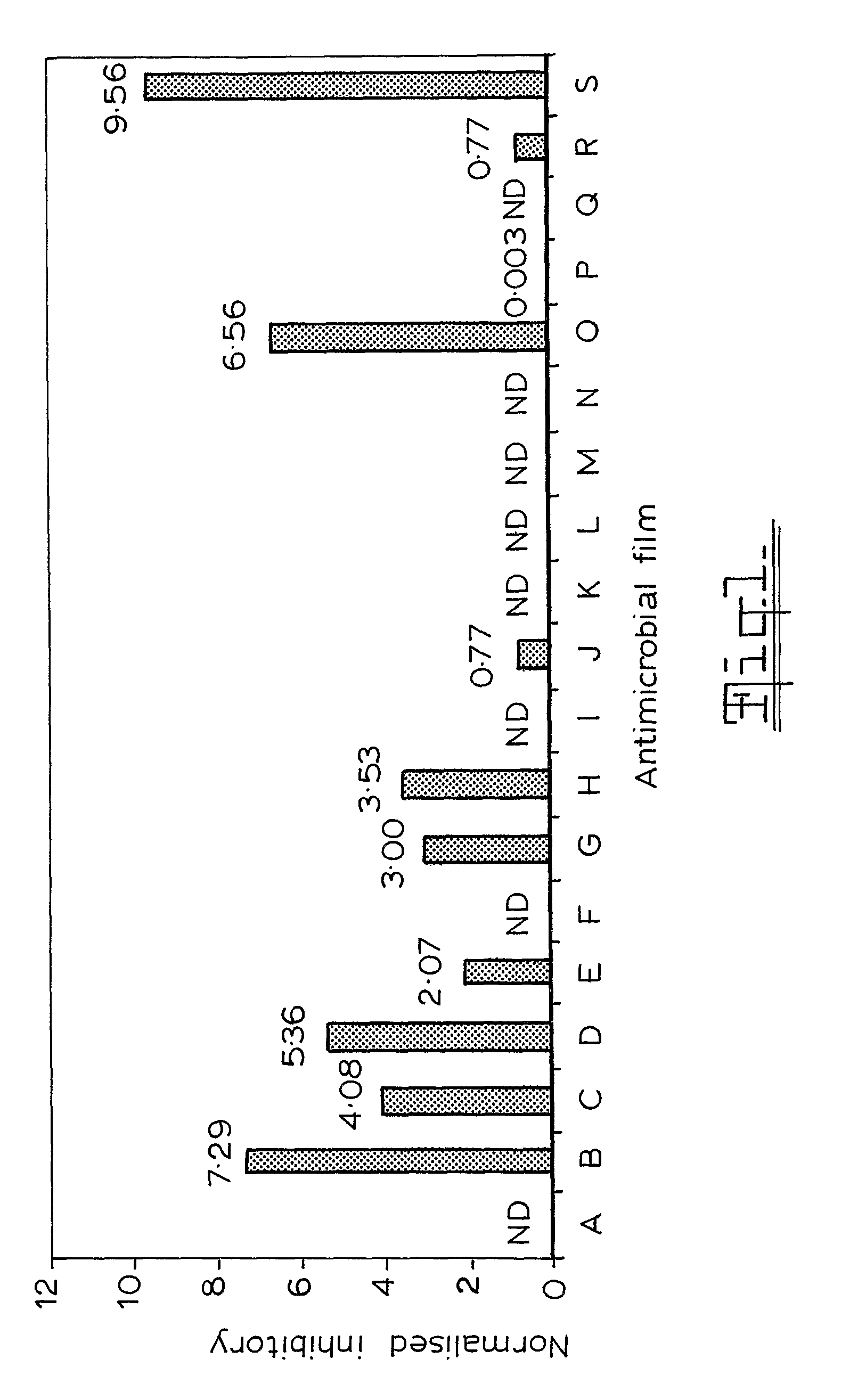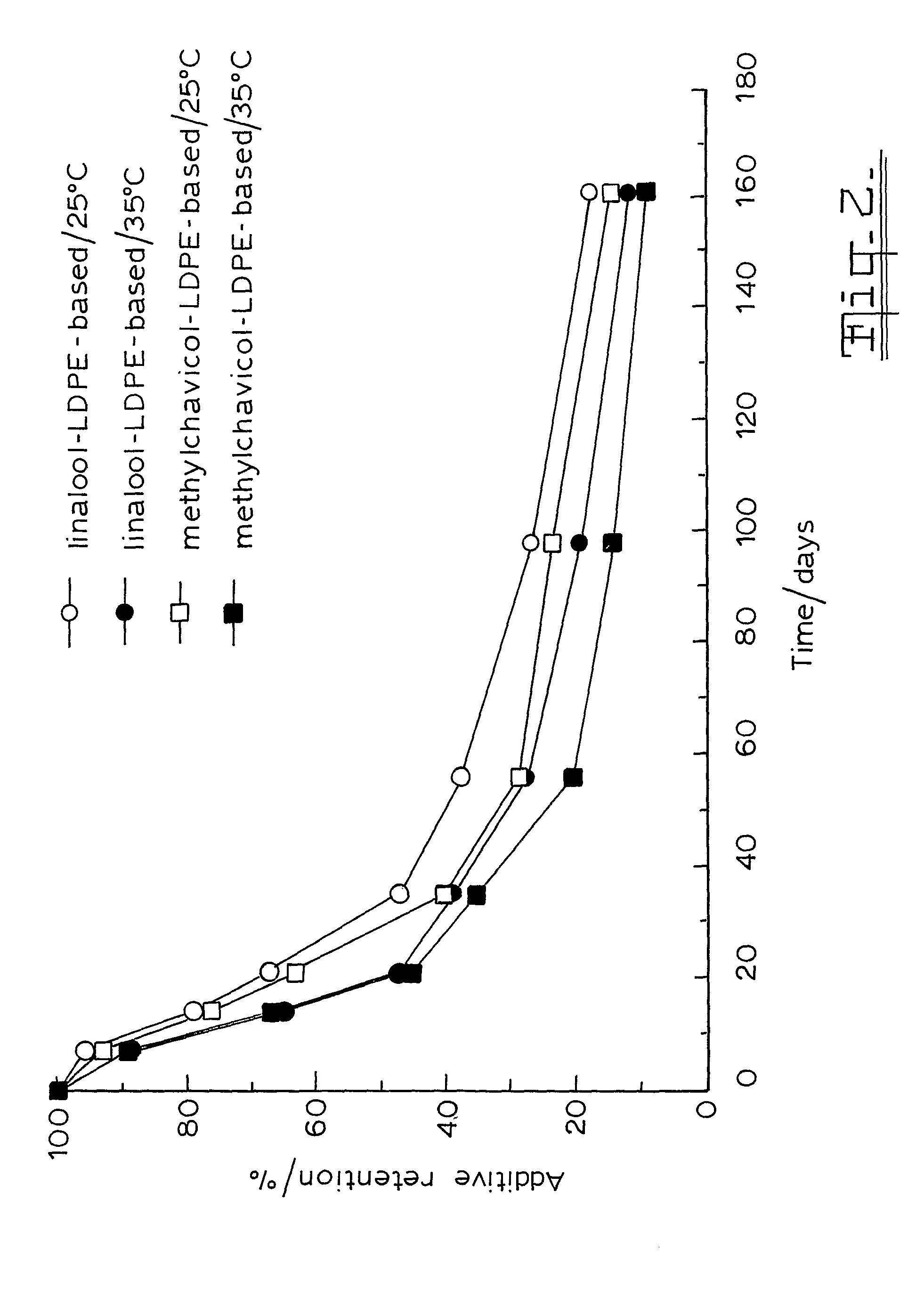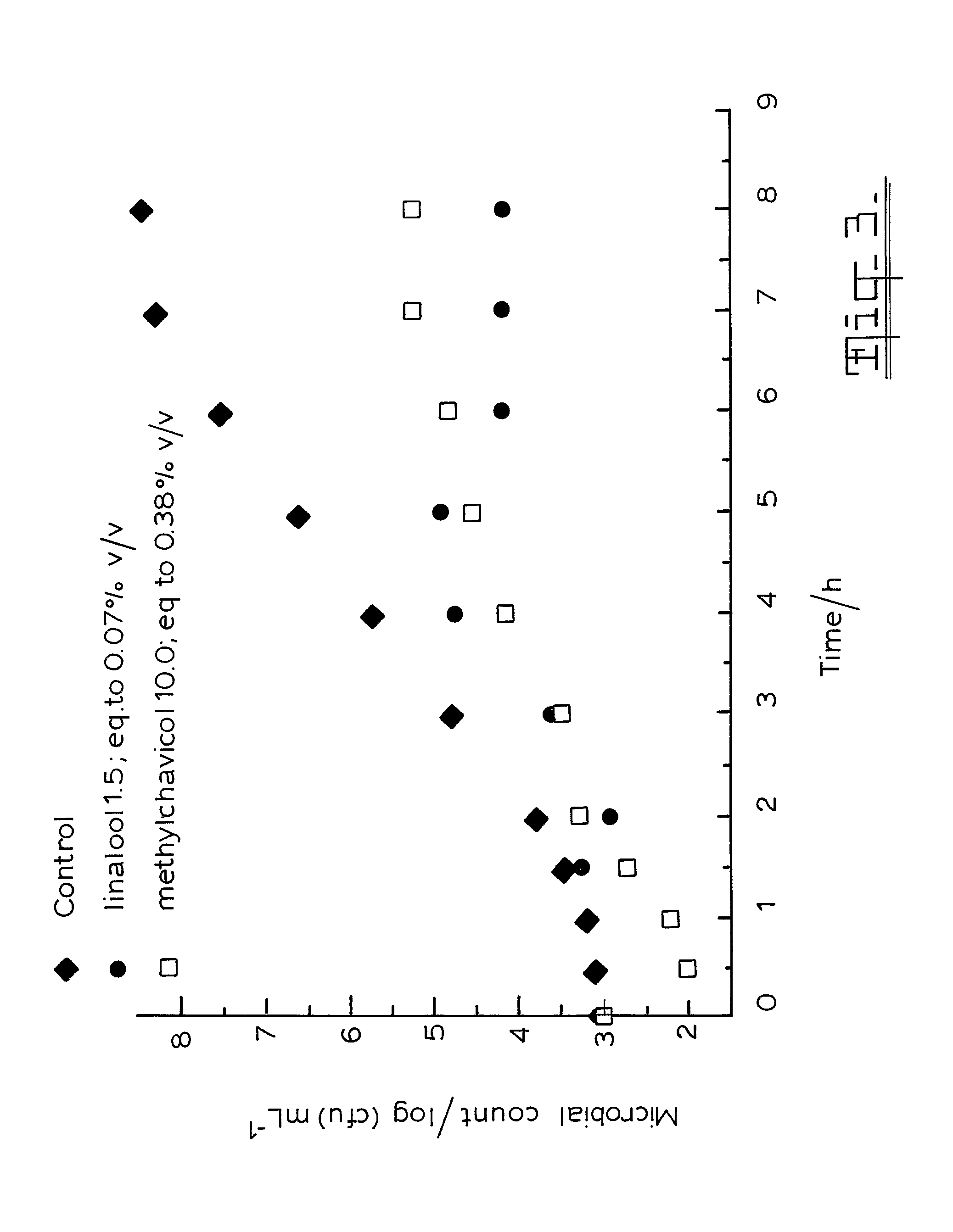Antimicrobial packaging material
a technology of antimicrobial packaging and antimicrobial film, which is applied in the field of food spoiling microorganisms, can solve the problems of low content and save costs in preparing antimicrobial film, and achieve the effects of reducing reducing the loss of volatile oil and also the risk of denaturing the oil constituent, and increasing the solubility of volatile oil components
- Summary
- Abstract
- Description
- Claims
- Application Information
AI Technical Summary
Benefits of technology
Problems solved by technology
Method used
Image
Examples
example 1
[0023]The polymer films containing basil essential oils were prepared as follows:[0024]Linalool (L260-2 from Aldrich Chemical Company) and[0025]Methylchavicol (AUSTL 21320 from Aurora Pty Ltd) were individually blended with EVA powder into a master batch which was then mixed with LDPE to a concentration of 1.5% by weight of the polymers.
[0026]The mixture was extruded in a single screw extruder at temperatures not exceeding 160° C. and blown into a film. The films formed were transparent, and had a content of 0.34% of the active agent (linalool or methylchavicol). The performance of the films was tested with Escherida coli a gram negative bacteria and Listeria innocua.
[0027]Table 1 shows the antimicrobial activity as observed on an agar disc diffusion assay (solid media)
[0028]
TABLE 1TreatmentConc % w / wZone of inhibition mmLDPE—— no reactionLinalool-LDPE0.3411.5 ± 0.19Methylchavicol-LDPE0.3410.1 ± 0.18
[0029]The performance of the films of this invention compared to films containing s...
example 2
[0034]Polymer film samples, based on various blends of LDPE, the co-polymer EVA (Ethylene Vinyl Alcohol) and the binding agent PEG (Polyethylene Glycol), containing thymol and carvacrol, either as a mixture or as a single component, were prepared from powdered LDPE (Microlene LD XJF 143 / 17, Qenos Pty. Ltd., Australia). Purified versions of thymol (98%) and carvacrol (98%) were obtained from Sigma-Aldrich Company Inc., Australia. The AM substances, mixed into a master batch, were incorporated into the LDPE matrix using a laboratory press.
Preparation of Films with Different Concentrations of am Agents
[0035]At the initial stage, films containing thymol or carvacrol at formulation concentrations varying from 1.0%-5.0% w / w were prepared to find the effective concentration / s of active agent retained in the sample after processing. The master batches were prepared by doping the copolymer in antimicrobial agent (in formulation concentrations of 1, 2, 3, 4, and 5% w / w respectively) dissolved...
example 3
Multi-coated Films Containing Natural Anti-microbial Agents Coating Solution
[0058]
Ethyl acrylate methyl methacrylate copolymer25%by weight(40% by weight of dry substance in purifiedwater)Ethanol (95% by volume)75%by weightLinaloolfrom 1%by weight
[0059]30-40% by weight of linalool is detected in the dried coating.
[0060]Films of LLDPE coated with coatings prepared as above with target concentrations of the active agent being 1% or 0.05% of the total film weight were tested for activity against E. coli and the results are shown in Table 11.
[0061]
TABLE 11AM activity of coated LLDPE films against E. colias observed by agar disc diffusion assayTargetActualZone ofMethodConc. / % w / wConc. / % w / wInhibition / mmCoated without———[1]agentlinalool1.00.910815.32 ± 1.45[2]b0.050.047712.20 ± 0.68[3]abmethylchavicol1.01.025913.52 ± 0.57ab0.050.049211.31 ± 1.00ab[1]—, no reaction[2]Values for zone of inhibition are represented as mean ± SEM[3]The treatment with same letter within row is not statistically ...
PUM
| Property | Measurement | Unit |
|---|---|---|
| temperatures | aaaaa | aaaaa |
| transparent | aaaaa | aaaaa |
| temperature | aaaaa | aaaaa |
Abstract
Description
Claims
Application Information
 Login to View More
Login to View More - R&D
- Intellectual Property
- Life Sciences
- Materials
- Tech Scout
- Unparalleled Data Quality
- Higher Quality Content
- 60% Fewer Hallucinations
Browse by: Latest US Patents, China's latest patents, Technical Efficacy Thesaurus, Application Domain, Technology Topic, Popular Technical Reports.
© 2025 PatSnap. All rights reserved.Legal|Privacy policy|Modern Slavery Act Transparency Statement|Sitemap|About US| Contact US: help@patsnap.com



